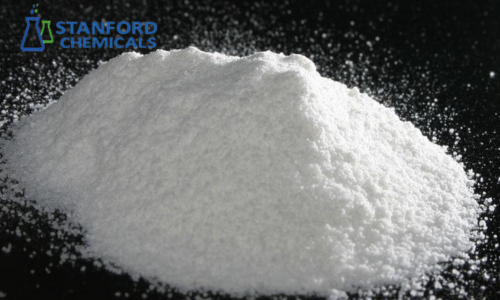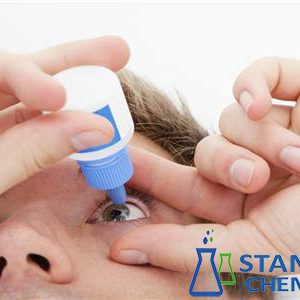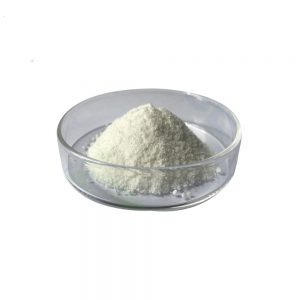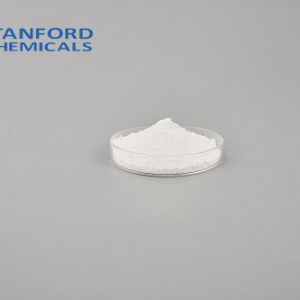- Home
- Hyaluronic Acid
- 020-000-119 Sodium Acetylated Hyaluronate
020-000-119 Sodium Acetylated Hyaluronate
Stanford Chemicals offers a new product-HymagicTM-AcHA, namely Sodium Acetylated Hyaluronate.
| CAS Number | 287390-12-9 |
| Texture | Leaves a silky, non-greasy feel on the skin |
| Benefits for Skin | Water retentio; Barrier support; Diminishing fine lines |
| Uses | Moisturizing, repairing, and anti-aging cosmetic products |
- Description
Description
Sodium Acetylated Hyaluronate Description
Sodium Acetylated Hyaluronate (AcHA), is a specialty HA derivative which is synthesized from the Natural Moisturizing Factor Sodium Hyaluronate (HA) by acetylation reaction. The hydroxyl group of HA is partially replaced with acetyl group. It owns both lipophilic and hydrophilic properties. This helps to promote high affinity and adsorption properties for the skin.
- Recommended Dosage: 0.01%-0.1%
- Usage: Good solubility in water, easy to handle
- Has a fresh and not-sticky feeling.
Sodium Acetylated Hyaluronate Features
- Highly Absorptive on Skin
AcHA exhibits exceptional skin affinity, adhering firmly to the skin even after washing. This ensures prolonged hydration, leaving the skin soft and supple. - Enhanced Moisturizing Power
AcHA delivers dual moisturizing benefits by rapidly binding with water to boost skin hydration levels. It keeps the skin moisturized for over 12 hours, ensuring long-lasting hydration. - Supports Skin Barrier Repair and Reduces water evaporation
AcHA promotes the proliferation of epidermal cells and repairs damaged ones, strengthening the skin’s natural barrier function. This reduces internal moisture loss, improves skin resilience, and alleviates dryness and roughness effectively.
Sodium Acetylated Hyaluronate Benefits in Skin Care
- Water Retention: Provides long-duration moisture holding of the skin.
- Barrier Support: Strengthens the natural barrier of the skin against environmental stressors.
- Skin Elasticity: Enhances skin smoothness, reducing the appearance of thin wrinkles.
- Soften Effects: Reduces redness and irritation; hence good for sensitive skin.
- Stability Enhanced: More stable and effective over time in skincare formulations.
- Smooth Texture: This leaves a silky, non-greasy feel on the skin.
Sodium Acetylated Hyaluronate vs Sodium Hyaluronate
Sodium Acetylated Hyaluronate is a sodium hyaluronate variant with improved hyaluronic acid properties. Then what are the differences in properties and efficacy between Sodium Acetylated Hyaluronate and Sodium Hyaluronate? For this, please refer to the table below.
| Feature | Sodium Hyaluronate | Sodium Acetylated Hyaluronate |
| Hydration | Provides effective hydration | Offers longer-lasting hydration |
| Skin Barrier Support | Basic support | Stronger barrier protection |
| Texture | Slightly sticky | Silky and non-greasy |
| Anti-Inflammatory | Minimal | Mild anti-inflammatory properties |
| Stability | Good stability | Higher stability and durability |
Typical Applications of Sodium Acetylated Hyaluronate
Ac HA can be widely applied in repairing, moisturizing, anti-aging cosmetic products, such as essence, mask, cream, etc.
The Appearance of Sodium Acetylated Hyaluronate
White to light yellow powder or granules
FAQs
Q: Is sodium acetylated hyaluronate safe for skin?
A: Yes, it is generally safe and has low irritation. It is recommended to perform a patch test when using it for the first time.
Q: Which is better, sodium hyaluronate or hyaluronic acid?
A: They are similar; sodium hyaluronate has smaller molecules for deeper penetration, while hyaluronic acid is suitable for surface hydration. The choice depends on your needs.
Q: What are the advantages of sodium hyaluronate eye drops?
A: Efficient moisturizing, promotes repair, low irritation, suitable for dry eyes and eye fatigue.
Q: What are the molecular weights of sodium acetylated hyaluronate?
A: Typically ranges from a few thousand to several million Daltons, with different molecular weights providing various moisturizing effects.
Submit your review | |
1 2 3 4 5 | |
Submit Cancel | |
It's pure Hyaluronic Acid. You can't really say anything against it! I ordered this to make some skin serum and quite honestly wasn't sure if it was the "right" molecular weight for a serum. Whatever this is has worked beautifully. You can mix the powder into a little glycerine to emulsify and then add to pure aloe Vera with vitamin c powder and it will gel giving you the best face lift in a bottle for the fraction of the price others sell it for.







